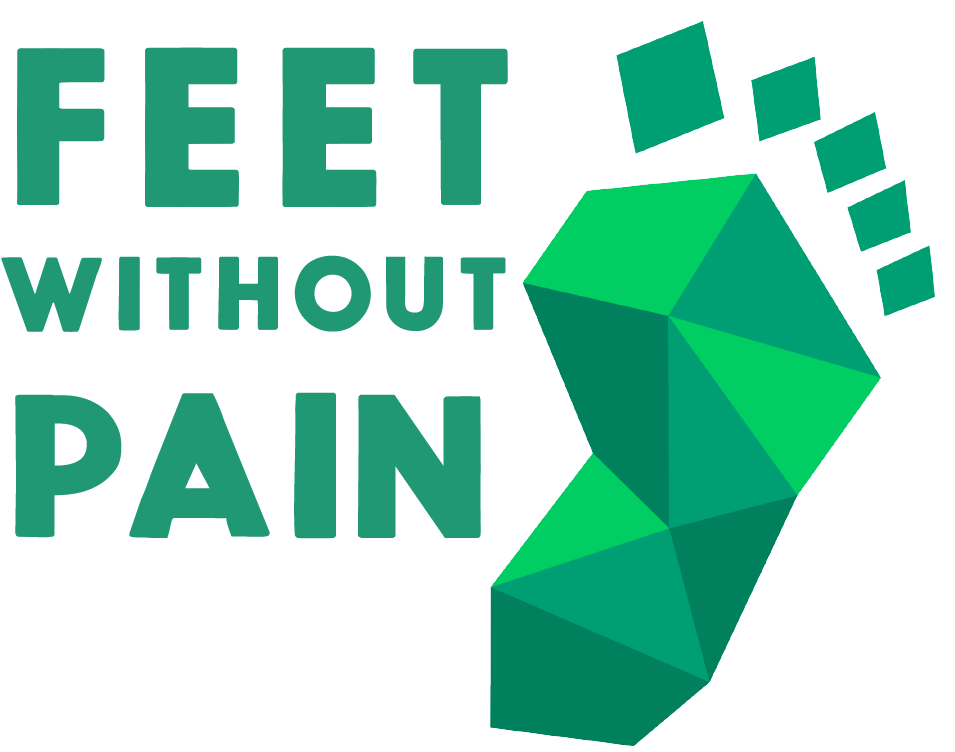Achilles Tendon
What is Achilles Tendon?
The original name of this tissue is the calcaneal tendon, but it is also known as the Achilles tendon. The name comes from Greek mythology, specifically from Achilles’ myth. In the story, the demigod is protected because his mother dipped him in the waters of the River Styx shortly after he was born. As a result, only the heel region was not wet, which later became the weak point of the Greek warrior. Despite being Achilles’ weak point in Greek tragedy, this tendon is one of the most resistant in the human body. It is located behind the ankle and connects the calf muscles (triceps surae) to the heel bone (calcaneus). This region generates strength to boost the step and is much requested during walks.
Causes of pain in the Achilles tendon
The Achilles tendon is one of the most painful areas in the foot for both men and women. The most common diagnosis of local pain is calcaneal tendinopathy. However, many analyses classify this disease incorrectly as Achilles tendinitis.
Excessive and repetitive pressure on the tendon cause pain in the area. When the load it receives is more significant than its absorption capacity, this tissue becomes inflamed, causing pain. If the condition is not treated correctly, the tendon cells and collagen fibers begin to deteriorate, a factor that stimulates the development of chronic disease. Pain, in these cases, may arise due to increased traction or compression of the tissue. Here are some of the most common causes:
Overweight
One of the leading causes of Achilles tendinopathy is being overweight. This condition stresses the feet and the tendon, forcing the tissue to work harder than it’s used to;
Physical activity
When the lower limbs undergo repetitive stress, the tendon is pulled excessively. This problem is widespread in people who stand for long periods, walk, do high-impact sports like running, or jump a lot like volleyball athletes. Pain often happens when people suddenly change their workout routines, overloading the calf;
Muscle weakness
When the muscles are weak, the tendon becomes more demanding. The lack of strength of muscle tissue makes it impossible to withstand loads and fully work with them, which intensifies load absorption by the tendon;
Muscle shortening
If the posterior musculature of the leg is tense or shortened, dorsiflexion (movement in which the tip of the foot goes towards the shin) is impaired. This action is performed repeatedly during walking. If the body cannot execute it, the tendon will be overloaded since it must propel the displacement.
Load malabsorption
– Biomechanical misalignment: Excessive pronation and supination cause the Achilles tendon misalignment. As a result, the musculature forces the tendon even more to have the same efficiency, overloading it;
– Inadequate footwear: shoes with little dampening and thin soles boost overload on the front of the foot because we use the heel less in activities as an instinctive reaction of protection. Increased use of the front of the foot overloads the Achilles tendon. Constantly wearing high heels can cause the posterior leg muscles to shorten, increasing traction to the Achilles tendon;
– Limb-length Discrepancy: when someone has one leg shorter than the other, it is said that that person has a “limb-length discrepancy”. This limb disparity is quite common in the population. Even a discrete difference of 1 cm can go without consequences. However, more than 1 cm can lead to discomfort—the more significant the limb-length difference, the greater the difficulties in day-to-day activities.
Tendinitis vs. Tendinopathy
Tendinitis refers only to tendon inflammation, which would also result in local pain and swelling. However, studies show that the inflammation only happens in the initial stages and that the tendon changes after the pain evolves for a few weeks.
The research “The pathogenesis of tendinopathy – A molecular perspective” showed through biochemical and microscopic analyses that injuries in the tendon go along with tissue restoration. Scientists do not rule out inflammation in the tendon membrane during the initial phase. Still, they believe the name tendinopathy is more appropriate to diagnose pain in the region after more than three weeks. Achilles tendinopathy can occur in two ways:
1) Tendon body tendinopathy: tendinopathy that happens in the tendon body due to excessive traction in the middle of the tissue;
2) Insertion tendinopathy: tendinopathy in the region where the tendon inserts into the bone. It results from excessive compression on the Achilles tendon.
Retrocalcaneal bursitis
Bursae are small fluid-filled “bags” that serve as shock absorbers. They decrease friction between bones, tendons, and muscles, protecting our body from possible damage. The inflammatory process of a bursa is called bursitis, and retrocalcaneal bursitis when the affected bursa are in the heel;
Haglund’s Deformity
Haglund’s Deformity is an abnormal bone growth between the heel skin and the Achilles tendon. Generally, this disease results from the excessive load on the tendon, often due to trauma, repetitive efforts, or frequent use of inadequate shoes that stimulate the inflammatory process.
Signs and Symptoms of Inflamed Achilles Tendon
The tendon’s most common signs and symptoms are joint stiffness (especially when waking up), pain, swelling, increased temperature, and tendon thickness. Generally, the pain gets worse with physical activity and improves with rest. However, the pain is insidious, which starts slowly and evolves progressively.
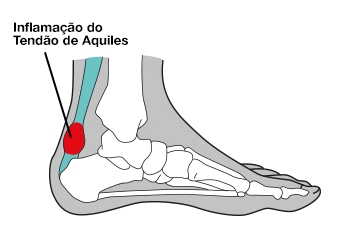
Untreated tendinopathy may lead to Achilles tendon tear. The person feels like they have been kicked or stoned in the calf. This injury is better known as “Tennis leg”. According to the study “Effects of short-term treatment strategies over four weeks in Achilles tendinopathy”, it is among the leading pathologies that reduce physical capacity in daily life and sports practice.
Achilles tendon rupture
When the stress at the site is greater than the load absorption capacity of the tendon, fiber micro-ruptures appear, causing tissue inflammation. When this situation becomes recurrent, it can result in tendinosis – chronic injury to the tendon associated with the degenerative process. This condition appears when the tendon weakens with continuous overload since it doesn’t have enough time to repair itself.
In addition to rupture due to continuous overload associated with tendinosis, there is also traumatic rupture. It happens when the impact is so intense that it breaks all the fibers simultaneously. In more severe cases, the injury may lead to tendon function loss.
Excessive training and frequent use of high heels are two leading causes of partial ruptures. The sudden practice of physical activity that demands a lot from the tendon and the intense collision between an external object and the area are two traumatic causes of total ruptures.
PREVENTION AND TREATMENT
As it is a delicate area, you need patience during recovery; otherwise, it may not be as effective. The main recommendation is to look for a specialist who can assess the type of trampling and injury. Thus, diagnosing the condition and indicating the right treatments according to each patient is possible. In addition, some tips can help relieve Achilles tendon pain and improve symptoms, such as:
– Insole: the insole is indicated to realign the footstep, keeping the Achilles tendon aligned, thus increasing its efficiency. Also, a small heel lift causes a load redistribution to the forefoot, relieving the tension;
– Load monitoring: absolute rest is not recommended, as the musculature and tendon need mechanical stimulation to remain healthy. One must maintain daily and physical activity load without causing pain. The search for a lower-impact exercise during the most intense pain episodes is essential. Even so, the presence of a specialized trainer is vital during training to correct movements and control pain;
– Exercises: the practice of physical exercise is essential to maintain a healthy lifestyle. Preserve strength and flexibility
– Cryotherapy: Applying ice to control pain in inflamed regions is a usual practice since cold decreases nerve conduction speed and generates local vasoconstriction. This process, together with decreased cell metabolism speed, slows the inflammatory process, reducing edema and pain;
– Manual Therapy: a physiotherapeutic technique in which the hands perform mobilization procedures, massage, movement re-education, joint stabilization, neuromuscular facilitation, and strengthening;
– Dry Needling: is a procedure in which the same acupuncture needles are used. Unlike the oriental technique that uses points for energy rebalancing, needling goes straight to the pain point. It aims to increase blood supply and oxygenation of the local tissue. On the calf musculature, it leads to relaxation, reducing tension on the tendon;
– PRP (Platelet-rich plasma): an increasingly popular technique in treating muscle, tendon, cartilaginous and fracture injuries. It consists of the local application of blood with a high platelet (blood cells specialized in healing) concentration. Recent studies have identified little difference between the results of Dry Needling compared to PRP, despite the latter treatment having a much higher cost, due to the blood component separation;
– Electrothermophototherapy: a less effective form of treatment that can be used as an additional. It comprises the therapeutic resources used in physiotherapy to control pain and inflammation through devices with electrical, thermal, and light principles. The best known are Russian current, FES, infrared, laser, shortwave, TENS, and ultrasound.
FEET WITHOUT PAIN®CUSTOM SHOES AND INSOLES FOR PAIN IN THE ACHILLES TENDON
The purpose of using custom-made insoles and shoes when the tendon is in pain is to reduce the overload in the region. Feet Without Pain insoles and shoes are made to offer excellent support to the feet. A slight elevation in the heel softens the impact on it or corrects the limb-length disparity.
The custom insoles and shoes are made with 3D technology and millimetric digital precision after a free foot, ankle, and knee evaluation with our specialists at one of our branch offices. Check some of their benefits for your feet below:
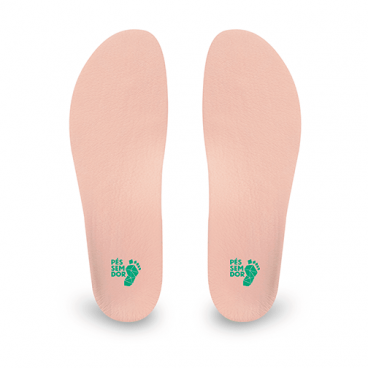
- Elimination or reduction of pain;
- Injury prevention;
- Increased comfort;
- Perfect fit;
- Standing longer without pain or discomfort;
- Prevention of pathologies progression;
- Improved impact absorption;
- Improved sports performance.
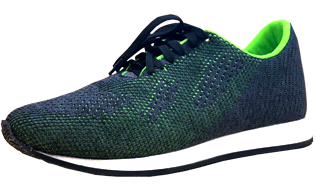
FOOTWEAR
Shoes can often trigger pain in the Achilles tendon. This is because they can compress the tendon against the bone when they’re too tight, increasing local friction and contributing to Haglund deformity evolution. In addition, shoes with thin soles and no cushioning also increase the risk of pain. Therefore, one must prefer shoes with slightly thicker soles that protect the heel region better.
High heels are shoes that women use a lot despite not being our feet’s best friends. That type of shoe completely changes the body’s biomechanics, and continuous use can promote calf muscle shortening. These changes affect the way of walking, increasing tension in the tendon and, consequently, pain.
SPORTS
Pain in the tendon area is usual in athletes, especially those who practice activities with a lot of running and jumping. Achilles tendon pain incidence is high in runners, primarily due to overload. Many athletes believe pain is part of healthy physical effort and insist on practicing despite the pain. However, continuing training under these conditions can increase regional and joint injuries.
Interruption of exercise may not be necessary if the pain is quickly treated. However, during pain treatment, it is crucial to be more careful with some points in your training: decrease training intensity, increase recovery time, seek expert guidance for movement correction, use the ideal sneaker for exercising, and use an insole to align your footstep. These simple and effective measures can help treat and prevent the progression of pathology.
TIPS AND CURIOSITIES ABOUT THE ACHILLES TENDON
To relieve pain and improve treatment efficiency, it is necessary:
– Keeping an adequate weight;
– Stretching;
– Doing physical activities guided by a professional;
– Correcting pronated or supinated gait;
– Wearing shoes with greater cushioning and support.
Stretching
Support yourself against a wall, placing one foot a little further forward with the knee bent, and leave the back foot aligned and completely leaning on the floor. Stretch the back knee and feel the calf stretch. Perform 2 sets of 1 minute on each leg, once a day.
Relaxation and analgesia
Apply an ice pack to the painful area of the tendon for 20 minutes straight. This technique can be used at the end of the day or post-workout to control pain and inflammation.
Calf strengthening
Stand on the edge of the stairstep with your heel out. Stretch your legs up, standing on your toes, and slowly return to the original position. Perform 3 sets of 15 to 20 repetitions once a day.
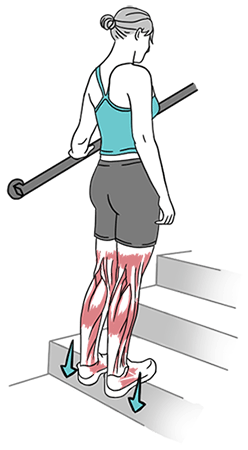
Massage
Massaging the calf region helps increase local circulation, relax the musculature, and reduce tension in the Achilles tendon. Always massage from the heel upwards to stimulate the lymphatic system and help blood circulation.
Some websites present natural rosemary, lavender, and castor oils as home treatments, but there is no scientific proof of their effectiveness. Scientists believe the feeling of relief is more likely to result from the massage itself than from the chemical effect of the chosen plant.
Homemade tips help relieve pain but should not be considered the only treatment. In case of discomfort, look for a specialist to indicate the best treatment.
FREQUENTLY ASKED QUESTIONS (FAQs)

How to purchase your custom shoe or insole?
It’s fast and easy! Schedule a free evaluation of your feet with our specialists to buy your custom-made shoe.
Call, send a message to WhatsApp at 4003-8883, or visit: www.pessemdor.com.br/agendamento.
How does the evaluation work?
Upon arriving at a Feet Without Pain branch office, you will be received by a foot, ankle, and knee specialist, who will then fill out a registration form and ask some questions about your pain. Next, the assessment of the feet begins.
The specialist will examine your feet to understand your foot pains and complaints. Then, using the high-precision 3D scanner device, the specialist captures your feet’ measurements.
We are the only company with a 3D scanner for designing custom shoes. First, with the measurements of your feet, a mold is created using 3D printers, and after that, we start making your shoe.
How long does it take for the shoes and insoles to be ready?
Feet Without Pain produces custom-made shoes in up to 3 days; then, they are sent to your home free of charge!
Is the evaluation free?
Our assessment is completely free! We perform a complete analysis of your feet and legs, and you pay nothing for it!
Do we accept medical insurance?
We do not work with insurance because our assessment is completely free! But you can check if your plan somehow refunds you regarding the shoes!
EXTERNAL LINKS
1) Achilles Tendon Injury | WebMD
2) Tendinite do tendão de Aquiles | Correr por prazer
3) Effects of short‐term treatment strategies over 4 weeks in Achilles tendinopathy | PMC
